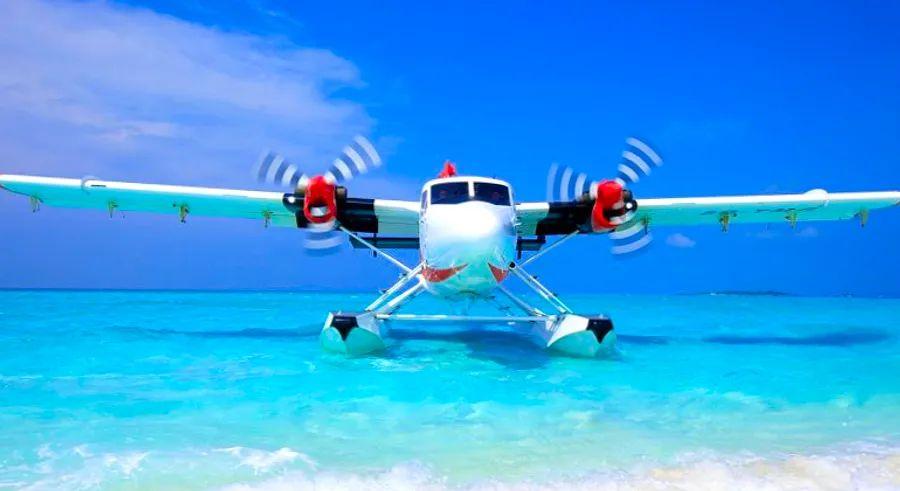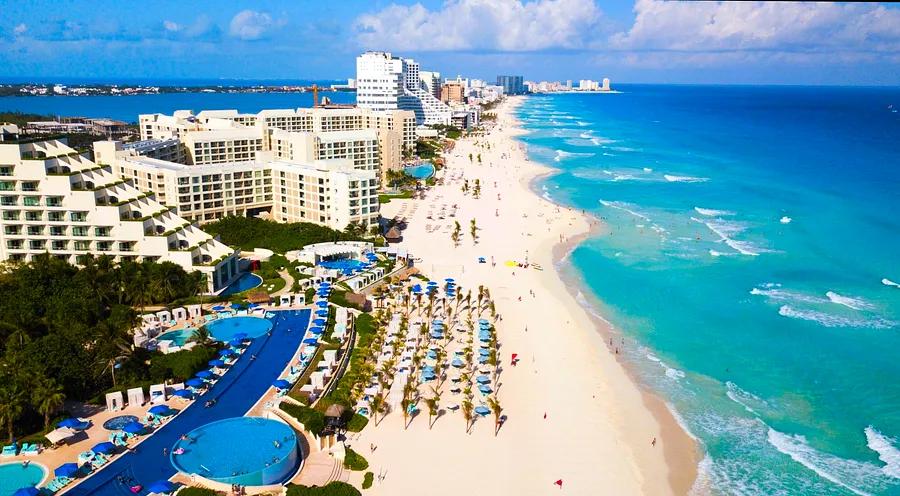Soaring with the barefoot pilots of the Maldives

If you're planning a vacation in the Maldives, chances are your trip will include a scenic seaplane flight.
This renowned Indian Ocean destination consists of 26 atolls, over 1,000 islands, and numerous resorts spread across 90,000 square kilometers of tropical paradise.
As more resorts are developed in remote regions, traveling to them by boat from the capital, Male’s Velana International Airport, becomes impractical for most visitors.
This is where Trans Maldivian Airways steps in to bridge the gap.
As the world's largest seaplane operator, it boasts a fleet of 50 aircraft, piloted by around 200 skilled aviators, and conducts over 100,000 flights annually, transporting passengers to various Maldives resorts.

There are a few key differences that set Trans Maldivian pilots apart from their commercial counterparts around the world.
For one, their runway is the vast expanse of water beneath them.
Next, there's their unique attire. While the pilots wear standard uniforms on top, they pair them with casual shorts and sandals on the bottom.
Unless, of course, they’re soaring through the skies.
'We call ourselves 'barefoot pilots' because when we’re in the cockpit, we actually kick off our sandals and fly barefoot on the pedals,' says Captain Andrew Farr.
'It really gives you a nice, freeing feeling.'
It’s quite a sight to see these sky rebels slip off their sandals, tan lines on display, as they navigate the open air from their cool, fuel-scented plane, roaring engines propelling them up from the aquamarine waters below.
Water landings versus landing on solid ground
Farr, who has been flying with the airline for over a decade, hails from Canada.
This makes perfect sense, as Trans Maldivian's entire fleet is composed of Twin Otters, aircraft originally designed and built in Canada.
These versatile twin-engine planes, equipped with either wheels, skis, or floats, are perfect for operating in diverse environments, whether it's the freezing cold of a Canadian winter or the warm tropical climates of places like the Caribbean.
'I find landing on water a lot more thrilling and challenging because the water is constantly shifting,' says Farr.
'On a perfectly calm day, many might think it's the easiest landing, but that's not the case. The water mirrors the sky, creating challenges. You have to approach with extreme caution in glassy water conditions,' says Farr.
'During the southwest monsoon, we face strong winds, and sometimes waves rise to four or five feet, accompanied by large swells. I enjoy the challenge of adjusting to these changing conditions and finding different techniques for landing.'
Operational hurdles
Unlike typical commercial flights, Trans Maldivian's schedule is constantly shifting, adjusted hourly based on resort requirements and whether guests are arriving for vacation or departing to catch international flights home.
Weather plays a crucial role in this dynamic, further complicating the logistics.
'There are times, for example, when the weather is so bad that we have to loop around before reaching the resort,' explains Farr. 'This could mean being five minutes late, which then throws off the entire schedule.'
Operations are packed into a tight window since planes can only fly during daylight hours, governed by VFR – visual flight rules. Simply put, pilots must be able to visually identify their landing spot.
'We're restricted to daylight hours, and we typically fly from dawn till dusk,' Farr adds.
Sometimes, if the last drop-off happens to run late, pilots can enjoy a night at one of the luxury resorts. Another perk that comes with the job.
But it's not all luxury. Farr's alarm goes off at 4:00 a.m. each morning, and he's at Trans Maldivian's headquarters by 5:20 a.m. to start the day.
After completing his pre-flight routine, he lifts off at 6 a.m.
The remainder of his day is spent navigating the skies above the Maldives.
'Typically, we fly about five flights daily, covering 10 to 12 different resorts,' he says. 'This usually adds up to about five hours of flying time per day.'

Before takeoff, the first task is calculating the plane’s weight.
The Twin Otter has a maximum takeoff weight of 12,500 pounds, though Farr notes that each plane may vary slightly in weight.
'You need to know the ‘basic empty weight’ of the aircraft and then figure out the useful load,' Farr explains. 'This includes fuel, passengers, and luggage.'
'When we arrive in the morning, we check the plane, walking around to ensure everything’s working fine,' Farr continues. 'Then, we receive a text that gives us our destination, the required fuel, the number of passengers, and luggage weight. After that, we calculate the center of gravity and balance for the plane.'
The airline operates two versions of the Twin Otter. Although the De Havilland DHC-6 Twin Otter was discontinued in the late 1980s, a Canadian company, Viking, later acquired the rights to produce it again in the 2000s.
'But they've fully upgraded the avionics,' Farr mentions.
'When you step into the cockpit, it feels more like you're aboard a 737 or a large jet,' he explains. 'It's an all-digital cockpit with screens, and while everything else on the plane remains true to the classic Twin Otters, the cockpit now looks entirely different. We require specialized training to operate them, and most of us are now flying these newer versions.'
The world of a floatplane pilot
Farr shares that his father was a pilot, which sparked his own passion for aviation from an early age. By seven, he was already determined to fly floatplanes after experiencing his first flight on one during his birthday.
'I still remember the thrill of seeing the water under the float, flying over the cabin, and watching my mother wave from below,' he recalls with a nostalgic smile.
'At that moment, I knew this was the career I wanted for life,' he reflects.
When asked what led him to the Maldives, Farr attributes it to a mix of reasons, including the absence of snow.
'As a floatplane pilot in Canada, I was always aware of operations here, so it was a dream of mine to find a way to work in the Maldives,' Farr recalls.
'Before I arrived, I was working in the far north, and one winter it dropped to -52°C (-61.6°F). That's when I thought, 'There has to be a better way. I love Canada, but if they could do something about winter, I'd consider living there again.''
Farr is not the only expatriate. The airline employs many pilots from Canada, the U.S., Europe, and a few from the Caribbean, along with local Maldivian pilots. He is often contacted by pilots eager to know how they can apply for a job, he adds.
To begin, you must undergo training as a commercial pilot.
'Typically, a co-pilot here starts with around 1,000 flight hours. They then spend two to three years gaining experience before being eligible to step up to a captain role,' Farr explains.
The training process is extensive, covering everything from aircraft systems to emergency procedures and safety protocols, according to Farr.
'It’s similar to flying for any commercial airline, but the experience is far more enjoyable,' he adds.
A large part of the enjoyment comes from interacting with passengers. Most are on vacation, so they tend to be in a great mood.
'At least once a week, someone tells me I have the best job in the world. And honestly, I feel that way too,' he shares.
'People are always so cheerful and eager. Occasionally, someone will tell me it's their first time on a seaplane, and I make an extra effort to ensure it’s the best flight they've ever had,' Farr explains.
And then, of course, there are the breathtaking views.
'Every day, we're flying over the same landscapes, but the scenery constantly changes – the water, the colors, the sand, and the light,' Farr remarks.
'The view from my office is simply the best in the world.'

1

2

3

4

5
Evaluation :
5/5